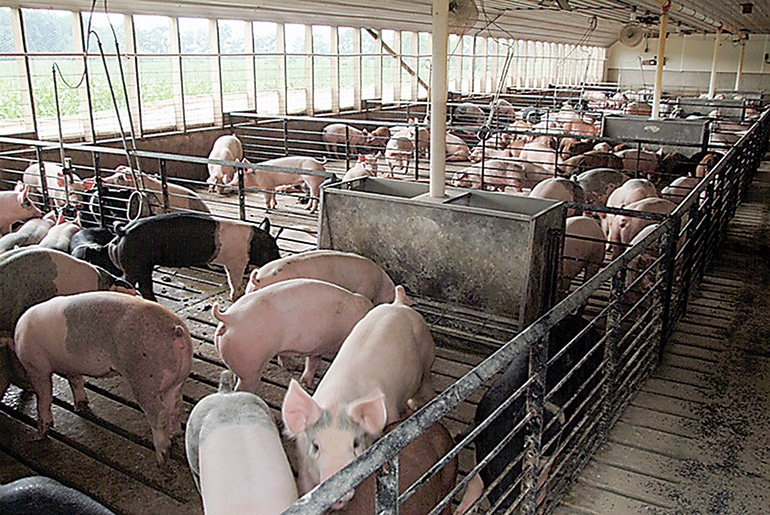The severity of the current hog market down cycle will be determined by how long we continue to outpace packer capacity. Unless there is a surprise in market numbers, packers will continue to keep bids down as additional pigs are not needed to fill their plants.
September 26, 2016

The live hog market has been under extreme pressure over the past several weeks. Western Corn Belt base bids fell to $51.32, as of Sept. 20. That value for live hogs, coupled with the futures market through February, indicate significant open market losses for the industry. If you call $50 current cost of production on a live basis average, the industry is losing $20 per head, with little hope for recovery in the next several months. Comparing those prices to 90 days ago, the average base price has fallen $60 per head, while the cutout has fallen about $15 per head. The latest retail pork data would show that the pork prices in August (the latest available data) were the highest monthly average of this year.
Packer margins are generally stronger after Labor Day — as more pigs are marketed seasonally later in the year. This year seems exceptional, but slaughter numbers have accelerated since Labor Day. We have pushed average slaughter and this has averaged 3.2% higher than 2015 since after the Fourth of July holiday week. Packers have plentiful pigs to slaughter, not bidding to buy a lot (if any) additional supply. They also have been enjoying very good margins at the expense of an industry needing to market pigs.
The question is how long does this last and how do we change this course of business for the producer near term? This will require a reduction in supply, or rapidly growing demand, or growing live hog demand from expanded packers.
The bottom line is that we probably have several months of negative margins to deal with, from an industry perspective. This would include most of the pigs in inventory now, or some six months before the seasonality of production changes.
These times are hard for the industry and we learn very quickly how effective our marketing and hedging strategies have been. In addition, cost of production differences become more pronounced as the best cost producers may lose $10 per head in the open market versus some who may lose $30 in the same time period. While the industry as a whole is financially strong going into this downturn, the working capital drain will have an impact, and for some will be a challenge to manage. Key takeaways from previous downturns are to:
1. Understand the impacts that falling inventory (probably your largest current asset) will have on your ability to borrow operating funds or maintain borrowing base compliance.
2. Understand what adjustments are needed to maintain adequate working capital through the entire cycle. In other words, if prices remain as indicated by current futures through the first quarter of 2017, what will working capital be at the end of that timeframe?
3. Make potential adjustments to the balance sheet structure early. Do you have long-term assets that were paid for with cash that could be termed out, creating more working capital on the front end? Depending on your situation, maybe there are underperforming assets that should be sold.
4. Be diligent about cost control. Look for ways to control cost that won’t negatively impact production. Challenging times require us to uncover all wasted costs.
5. Maximize revenue on each pig. I think first about reducing mortality and culls, but the big challenge is going to be hitting the best margin market weight. With packers nearing capacity, pigs growing well with cooler weather and new corn in the near future, this will be a challenge for many producers.
The severity of the down-cycle will be determined by how long we continue to outpace packer capacity. Unless there is a surprise in market numbers, packers will continue to keep bids down as additional pigs are not needed to fill their plants. Watch the September USDA Hogs and Pigs Report which will be released Sept. 30 for an indication of the inventory numbers the market will be trading.
In the long-run, our issue will be to continue to grow market share in the export market. With more slaughter capacity we will produce more pigs and will likely outpace domestic demand by a large margin. Additional reliance on exports will create more volatility, but ultimately allow the U.S producer to capitalize on our advantages in cost and quality of production.
You May Also Like



